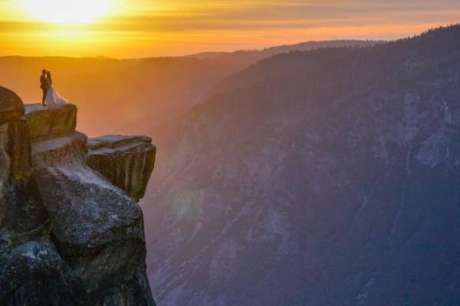
Must…Have…Tweets!
In the highly entertaining Tobe Hooper film, Life Force the human population are turned into ravenous creatures that must suck the essence of life out of other human beings every few minutes or die. Without going into plot (in this case alien invasion), the streets of London are quickly turned into a maelstrom of carnage. Half dead zombies grab onto the living, draining them. The drained then come back to “life” looking for new victims to drain. And so on.
Typically, zombies do not dwell on one meal for long. Unthinking creatures, they rip into one victim after another, leaving the dead and dying in their relentless search for fresher meat. Of course, the bitten quickly “turn” and well you know the rest.
It’s pretty scary…the stuff of nightmares. Many observers have likened the popularity of zombies in our culture to not-so-latent fears about the economy or terrorism; that these ghouls symbolize a loss of control. It also has been suggested that we see ourselves in these mindless creatures, an even scarier thought -for how quickly our appetites run amok. Neither view is wrong. As one of the remaining mortals exclaims during George Romero’s remake of his own classic film, Night of the Living Dead: “We are them.”
Perhaps sadly, it’s also a metaphor for the effect social media is having on more and more of us every day. We have become “content zombies.” No longer able to process information, we rip through new media biting and chewing and spitting out content, barely digesting any of it. Ravenously, we move on to the next. Indeed, barely chewed facts, items and stories pass through us onto the web like offal. Our constant tweets, grams and snaps are mere bits and pieces, carrying links like so many worms, each containing the shred of something devoured earlier. Or something like that.
I myself am turning. Last night I tried reading an article in a magazine. I found myself jumping over paragraphs, skipping entire chunks, gluttonous. Unsatisfied, I started another article. Then another. Within minutes I was in front of my laptop lapping up more, more and more!
Already an addictive personality, once I taste blood I cannot stop gorging. The more I feast the less I retain. A vicious cycle if ever there was one. God help me for I am a content zombie. I am legend.
This is news? “Clickbait” journalism in the digital-social age.
September 6, 2016
While reading the “newspaper” online I came across a couple stories that captured my attention. I clicked on them both not because they were newsworthy (they weren’t) but because they appealed to my socially & digitally trained brain. The same brain that grew up reading long form magazine pieces in The New Yorker and Field & Stream; not to mention spending hours slowly devouring the Sunday paper, digesting sections like a python moving rodents down its throat.
That was then.
These stories are classic examples of the sort of content we feed on now. Both are fairly meaningless by old-school journalism definitions. Nobody died or got hurt. Nothing really is at stake.
The story about vandals knocking over a sandstone goads us into clicking its link, pushing our buttons to judge and to vilify. In this way it is like those “news” stories about drunken beachgoers tormenting a baby dolphin. We have to see these cretins and pillory them. Seeing for ourselves is made possible by amateur video or photography.
The other story functions in the same way but by pushing completely different buttons. The author beseeches us to try and find the “mystery couple” from this “Instagram-worthy…magical photograph.” The picture is of a bride and groom posing on a pretty spot in Yosemite. They are not famous. The photographer is not important. The location is unquestionably on infinite tourist-y photo albums. The chance discovery and the chance to discover are what makes this story click-bait.
Not long ago neither piece would be considered news. Now they probably get more clicks aka readers aka viewers than headlines about bombs falling in Syria.

LOS ANGELES, CA – APRIL 27: (L-R) Guest, internet influencers Brittenelle Fredericks, Sara Dinkin, and musician Garrett Borns of BORNS attend Discover Los Angeles’ “Get Lost” Pop-Up Concert at The Geffen Contemporary at MOCA on April 27, 2016 in West Hollywood, California. (Photo by Charley Gallay/Getty Images for Los Angeles Tourism & Convention Board )
Buh-Bye, your services are no longer required.
Part of the reason I dig this story from Gawker is that it did NOT appear in a marketing trade publication. Not that Gawker has more integrity than Adweek or AdAge (it has less, frankly) but it IS a consumer-facing property and a popular one at that. Therefore, the story has more cultural currency.
What I really love about this story is that it calls bullshit on the idea that anyone with a few thousand followers on Instagram, Facebook or Twitter can be considered an “influencer” and worth paying money to. The practice of paying slews of d-bags thousands of dollars to “interact” with one product or another to “influence” buyers (in lieu of actually using creative ideas) has finally jumped its own self-made shark of stupidity. (In my opinion, it happened several years ago, when some fashion brand paid a Kardashian six figures for one God-forsaken Tweet.)
Paying celebs to endorse products is hardly a new concept. On the contrary, it may be the oldest trick in marketing. But the frenzy of chasing fabulous nobodies to capture the culture just reeks of laziness and stupidity. Why pay for creativity or thinking of any kind? Let’s just book a handful of Whoevers.
Read this quote from a social media strategist:
“I remember I once did a speaking thing to a school of young social media people, and they asked, “How do I become an influencer?” So I asked them what they were good at. And they said, “Nothing.”
As a father of young teenage girls, I am aghast by such vapidity and entitlement. Moreover, I want my kids to be as well. We’ll see. With scores of somewhat attractive, nominally talented young people appearing on too many reality shows to count, it’s easy to see how the easy way to fame and fortune took root. So, I’m delighted a controversial and popular site like Gawker is calling bullshit on one aspect of it. Having big boobs and tattoos is not a talent. So-called “influencers” should be skilled at whatever it is they’re fronting for.




 The Happy Soul Industry
The Happy Soul Industry The Last Generation
The Last Generation